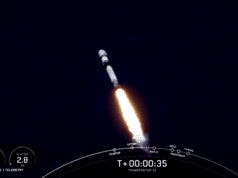 Dulles, US: NASA’s Goddard Space Flight Center (GSFC) selected Orbital Sciences Corporation, a space technology company, to design, build and test the Ice, Cloud and land Elevation Satellite-2 (ICESat-2). Scheduled for launch in 2016, ICESat-2 is the next-generation successor to the original ICESat satellite, which operated from 2003 to 2010. The contract award is valued at USD 135 million, including the spacecraft and associated options.
Dulles, US: NASA’s Goddard Space Flight Center (GSFC) selected Orbital Sciences Corporation, a space technology company, to design, build and test the Ice, Cloud and land Elevation Satellite-2 (ICESat-2). Scheduled for launch in 2016, ICESat-2 is the next-generation successor to the original ICESat satellite, which operated from 2003 to 2010. The contract award is valued at USD 135 million, including the spacecraft and associated options.
Orbital will base the ICESat-2 satellite on its LEOStar-3 platform, the same technology that is being used for NASA’s Landsat Data Continuity Mission (LDCM) spacecraft, which is currently being assembled and tested at the company’s Gilbert, Arizona satellite manufacturing facility. ICESat-2 will also be built and tested at the Gilbert location. Orbital is also in production on three science satellites for NASA at its Dulles, Virginia campus, including the Nuclear Spectroscopic Telescope Array (NuSTAR), Orbiting Carbon Observatory (OCO), and Gravity and Extreme Magnetism Small Explorer (GEMS) programmes.
Mike Larkin, Orbital’s Executive Vice President and General Manager of its Space Systems Group, said, “The ICESat-2 programme will be a welcome addition to our NASA activities at the company’s Gilbert, Arizona facility, which currently includes work on the LDCM satellite and on national security satellites.”
According to Orbital’s press statement, ICESat-2 satellite will use precision laser-ranging techniques to measure the topography of the Greenland and Antarctic ice sheets and the thickness of sea ice. The mission was recommended by the National Research Council in its 2007 decadal survey of NASA Earth science research priorities. ICESat-2 supports NASA’s Earth science programme by helping scientists develop a better scientific understanding of the Earth system and its response to natural or human-induced changes.
In addition, the next-generation program, ICESat-2 will continue the scientific data collection with these specific objectives:
– Quantifying polar ice-sheet contributions to recent and current sea-level change and linkages to climate conditions.
– Assessing regional signatures of ice-sheet changes to understand mechanisms driving those changes and improve predictive ice sheet models.
– Estimating sea-ice thickness to examine ice/ocean/atmosphere exchanges of energy, mass and moisture.
– Measuring vegetation canopy height as a basis for estimating large-scale biomass and biomass change.
– Enhancing the utility of other Earth observation systems through supporting measurements.
Source: Orbital




